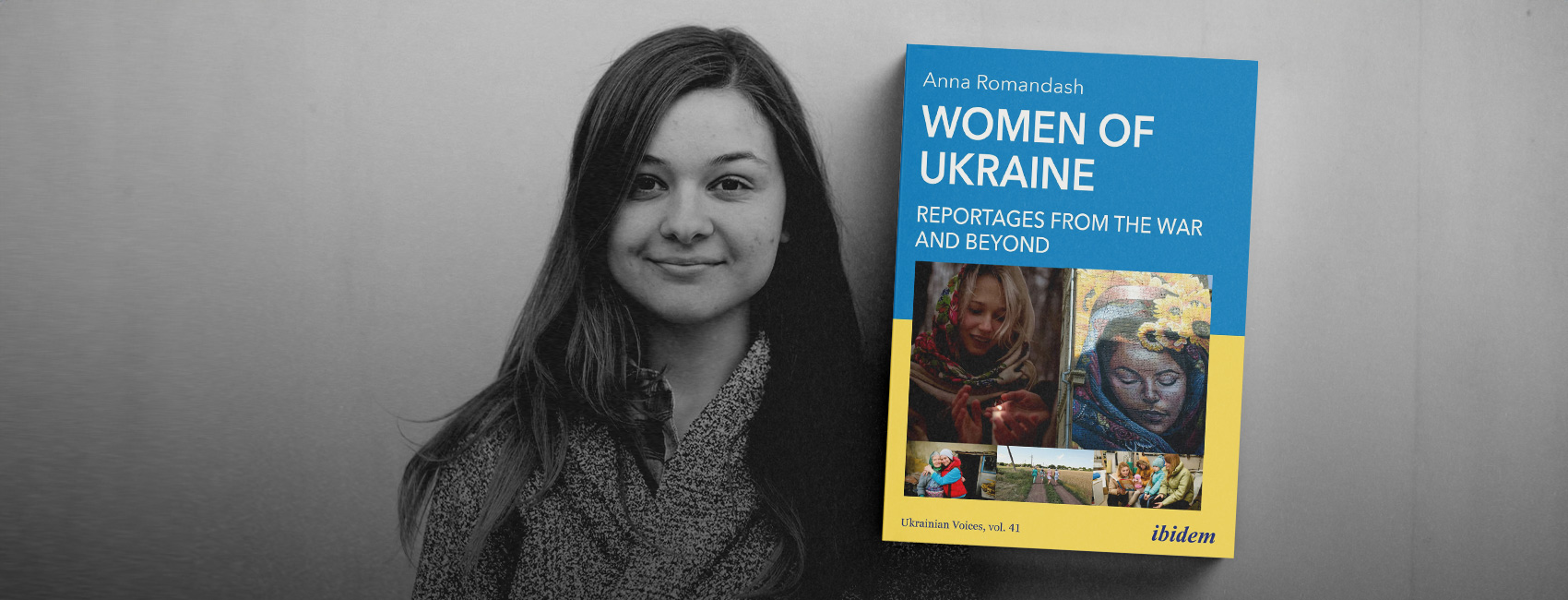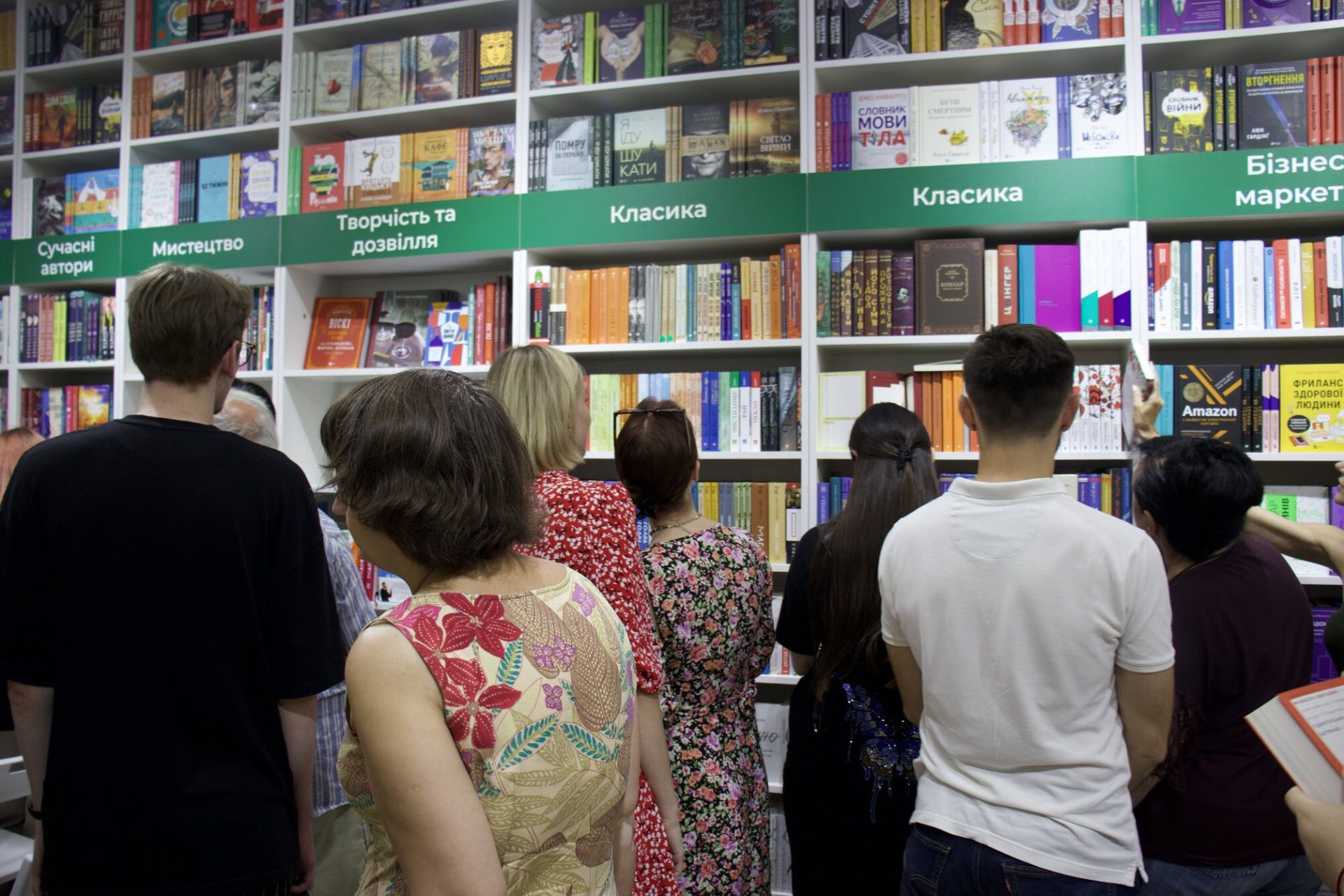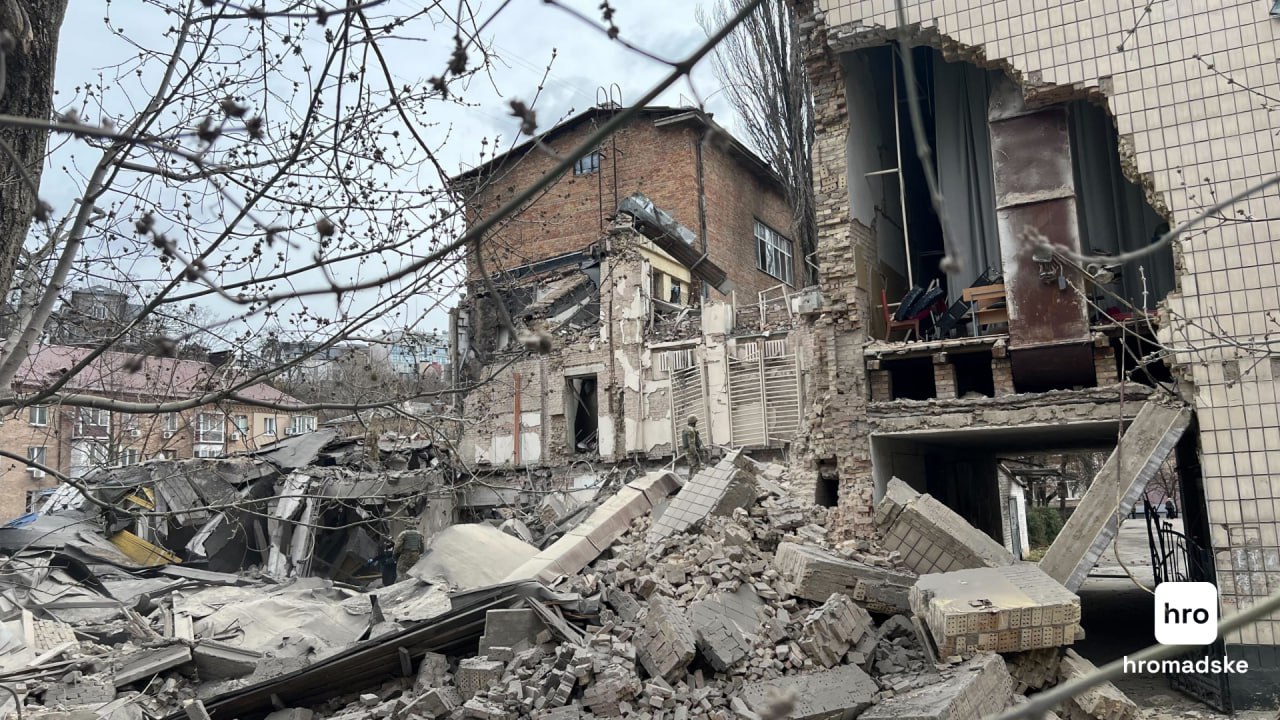* ESC - закрити вікно пошуку
Russia's crimes
Carrying on Amid War — A Review of Women of Ukraine: Reportages from the War and Beyond
05.04.2024
Since Russia launched its full-scale invasion of Ukraine in February 2022, the number of women serving in Ukraine’s armed forces has increased significantly. Women now serve as platoon leaders, snipers, drone operators, and in a variety of other military positions. However, the armed forces are not the only place in which the number of Ukrainian women volunteering has risen.
According to a March 2024 CNN article, the number of Ukrainian employers “nationwide are currently facing a shortage of about 60,000 skilled workers, an increase from 20,000 since 2021.” This shortage means that all career fields have seen a climb in the number of women taking on roles thought of traditionally as male ones. Anna Romandash’s “Women of Ukraine: Reportages from the War and Beyond” reveals the extent to which women have participated in career areas ranging from journalism to marine biology, combat medicine to disabled persons advocacy. Other reportages in the book feature women from various backgrounds and challenges, such as the refugees establishing a new life in western Ukraine, a teacher who develops a new way to connect Ukrainian literature with the current war, and Ukrainians everywhere who are decolonizing Ukraine’s history, literature, art one importance cultural piece at a time.
What makes “Women of Ukraine: Reportages from the War and Beyond” immensely powerful is the boldness with which each woman conveys her story. The collection opens somberly and honestly with Romandash’s own contribution, “Awakening to Russian Aggression: The Invasion of Ukraine Must Stir the Global Community to Action in Support of a Besieged Nation and the Human Rights Stake in the Fight.” While the essay focuses primarily on Romandash’s experience during the war’s initial hours, it manages to adeptly place the individual experience within the collective one as Romandash recalls feeling that on the night of 24 February, “Something was amiss.” Romandash also acknowledges the importance of her journalism training as she witnessed the invasion unfolding. She also conveys, at an individual level, what Ukrainians both native and diasporic have expressed to the global community for the two very long years their homeland has endured the brutal war—gratitude. Romandash writes,
“I am grateful to people around the world supporting Ukraine. This is not a question of politics; it is a matter of humanity, of helping fellow humans in need who are being senselessly murdered and whose homes are being destroyed.”
Romandash makes another key statement in this essay: “This war is not only about Ukraine. It is about humanity and values, about the right to be free, to live in peace, and to protect your nation and your land.” Despite the fact Romandash dates these words as February 2022, her message is still pertinent and important, especially as the aid support from the United States continues to be delayed.
RELATED: “There is deathly silence around me:” A Review of Nadiya Sukhorukova’s ‘Mariupol Hope’
On 19 March 2024, nine US Republicans voted against a resolution condemning child abductions in Ukraine. The symbolic resolution holds Russia accountable for the innumerable kidnappings of Ukrainian children it has conducted since February 2022. Women of Ukraine features the stories of displaced mothers and children, and one essay poses the reality that displacement poses for the 4.3 million displaced children. Other stories, like “Her Child Was Deported to Russia,” focus on the kidnappings that the majority of the US government recently condemned. It is the story of Kseniia, a military medic who has spent most of her adult life in Vovchansk on the Russian border, a town “turned eerie during the occupation” after Russian troops “quickly cut off all the communication Vovchansk had with the rest of Ukraine.” While Kseniia served in the Ukrainian Armed Forces, her daughter, Eva, stayed with her grandparents. Eventually, Kseniia’s brother, Andriy — blinded by Russian propaganda — moves to Belgorod and takes Eva with him. Eventually, after months of endless phone calls, Andriy returns Eva to Kseniia and her grandparents. Kseniia’s story not only highlights the terrifying ordeals parents have endured as their children are taken unwillingly into Russia, it displays the fractured families that have developed due to the influence of Russian propaganda. Kseniia shares her harrowing experience openly, making it even more powerful because it shows the risks Ukrainians are willing to take to protect their children.

Women of Ukraine is also a beautiful display of Ukraine’s ethnic diversity. “Proud Ukrainian with Nigerian Roots” by TOZHSAMIST (which means “identity” in Ukrainian) founder Alice Zhuravel, who left her native Kharkiv to live in Lviv. Zhuravel has a unique mission during the war — combating misinformation by elevating the narratives of diverse Ukrainians. Zhuravel speaks about embracing her identity as a “‘proud Ukrainian with Nigerian roots’” and how the war made her “‘want to highlight the diversity that is here, in Ukraine.’” Her goal is to break “the Russian narratives about Ukraine,” which portray Ukraine as “racist and intolerant.” Zhuravel’s contribution notes that Ukraine’s demographics have changed dramatically in the last century and that, prior to the war, almost five million Ukrainians were immigrants. Africans “were the second biggest group arriving in Ukraine in the past ten years after Asians,” even though Black Ukrainians comprise less than one-percent of Ukraine’s current population. Zhuravel’s work with TOZHSAMIST, since the war’s beginning, has not gone unnoticed. Zhuravel’s Twitter/X following is significant—a whopping 18.8K followers, and her efforts have even been featured in the United States thanks to Black Diplomats founder Terrell Jermaine Starr.
Of course, one cannot read Women of Ukraine and not notice stories like “Surviving the Russo-Ukrainian War with Disability,” the story of Tania, a disabled activist, who is a project coordinator for Ukraine’s Fight for Right. Fight for Right is an NGO that advocates for the rights of people with disabilities. Like other disabled Ukrainians during the war’s initial days, Tani knew that if she did not leave Ukraine right away, she would not be able to leave whatsoever. However, because of Ukraine’s lack of adequate infrastructure for disabled people, escaping occupied areas or leaving Ukraine entirely proved extremely difficult, if not entirely impossible, for many disabled Ukrainians. For example, the entire country has only two wheelchair-accessible shelters. Thus, Tania’s work transformed almost instantly. She became part of a network of individuals who help evacuate disabled people. Tania notes that “most Ukrainians evacuated themselves” and that “the priority has always been women with children.” She also provides insights about how dangerous and unpredictable evacuations are for both the volunteers and the evacuees. Two years into the war, Tania and others like her now work with government officials to make Ukraine more inclusive not only as the war continues, but also in the future.
RELATED: Review: The Death of a Soldier Told by His Sister — an honest, beautifully told diary of grieving
Along with bravery, innovation, and astounding female fortitude in the face of Russian brutality, Ukrainian resilience is a key theme in Women of Ukraine. In fact, one entire essay is devoted to an examination of the resilience which has so inspired the globe. In “‘We Carry On, but it Doesn’t Mean We’re Not in Pain,’” psychologist Olha Kukharuk examines the collective war experience Ukrainians now share. She began working with war-affected individuals in 2015, when the events unfolding in Ukraine received little international attention. Kukharuk defines Ukrainian resilience as “ ‘strategies to survive and renew oneself not only physically, but mentally.’” Kukharuk also shares that “understanding Ukrainian resilience may be difficult, especially for non-Ukrainians,” because Ukraine is “presented in two extremes.” Kukharuk argues that foreigners view Ukrainians as either “trauma-affected” or “unbreakable.” As the war continues and the human cost of the war continues to rise, Kukharuk’s contribution is extremely valuable to the global conversation about rebuilding Ukraine. According to some sources, the number of patients in Ukraine diagnosed with PTSD has increased fourfold since 2021, Ukrainian soldiers, children, and other members of the general population struggle with PTSD and other trauma-related mental health issues. Thus, Kukharuk’s essay brings to the forefront a conversation about mental health that many have been unwilling to have, and it shows that investing in mental health will be imperative as part of Ukraine’s rebuilding socially, culturally, and even economically.
Women of Ukraine: Reportages from the War and Beyond, published as part of the Ibidem Ukrainian Voices series, takes a nuanced look at the lives of Ukrainian women and the experiences that are vastly reshaping their lives and their homeland. It is a brave and bold contribution to the realm of women’s literature, and it is a unique record of events and personal narratives not seen on or heard from European soil since the Second World War.
This publication is sponsored by the Chytomo’s Patreon community
що більше читаєш – то ширші можливості

1211
Russia's crimes
The award-winning journalist and soldier Alla Pushkarchuk was killed by a Russian missile strike
26.04.2024 -
1479
Russia's crimes
The constant shelling of Kharkiv leads to major backlog for Ukrainian books-in-print
04.04.2024 - Olesia Boiko


